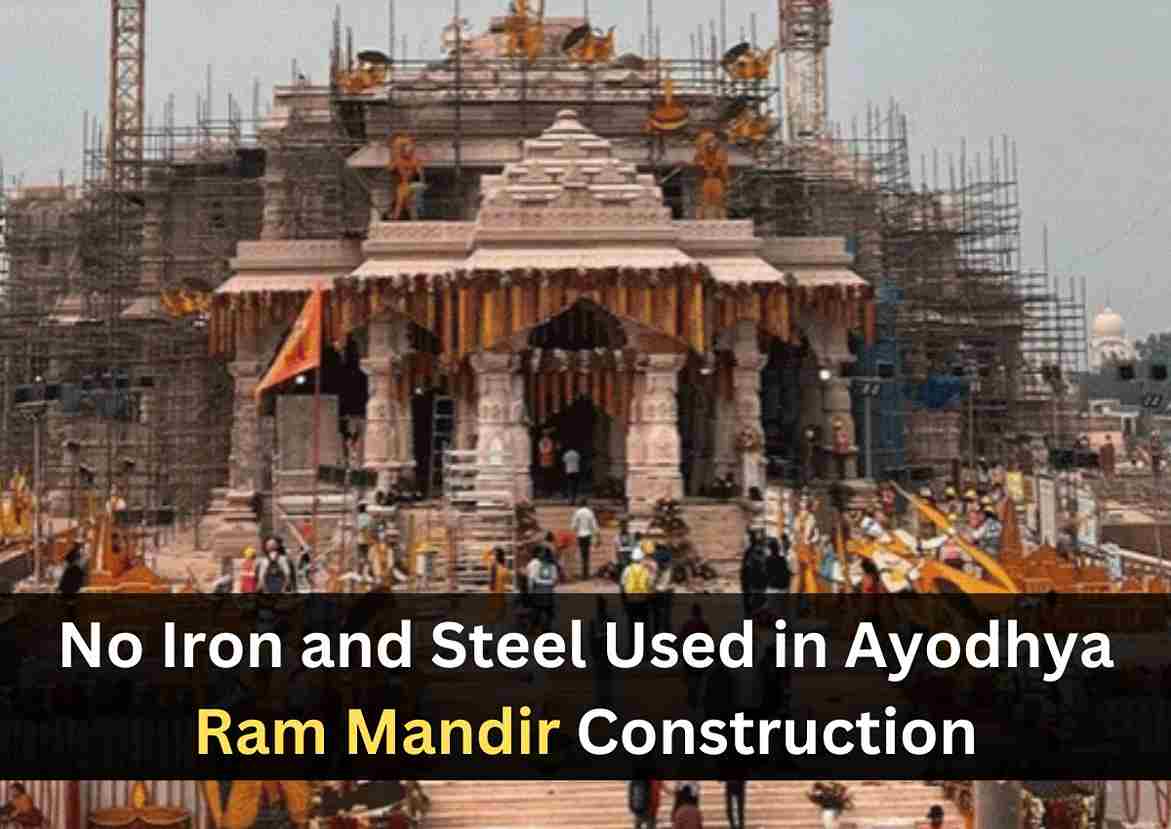The Ayodhya Ram Mandir, dedicated to Ram Lalla, stands as an architectural marvel, seamlessly blending traditional Indian heritage with cutting-edge scientific construction techniques. Shri Nripendra Misra, chairperson of the temple construction committee, emphasizes its durability, designed to last over a thousand years. The grand structure integrates top Indian scientists’ contributions and even incorporates ISRO technologies.
Traditional Design with a Modern Twist
Architect Chandrakant Sompura, from a lineage of 15 generations designing heritage temples, crafted the Ayodhya Ram Mandir architectural design. The design adheres to Nagar Shaily, representing northern Indian temple designs. Sompura envisions the temple as a rarely seen, splendid creation, not only in India but globally.
Materials and Construction Techniques use in Ram Mandir
The temple, spanning 2.7 acres with a built-up area of 57,000 square feet across three floors, stands out for its construction approach. Notably, no iron or steel has been used to ensure longevity. The height, reaching 161 feet, reflects about 70% of the Qutab Minar’s height. The construction focuses on the very best quality granite, sandstone, and marble, eschewing cement or lime mortar in joints.

Scientific Innovations for Stability
Dr. Pradeep Kumar Ramancharla, Director of the Central Building Research Institute (CBRI), Roorkee, highlights the scientific aspects of the temple’s construction. The structure is designed to resist a 2,500-year return period earthquake. The sandy and unstable ground below posed a challenge, but innovative solutions, including engineered soil and a metal-free concrete raft, were implemented.
Foundation Reinforcement and Material Choices
The temple’s foundation involves a meticulous process, with 47-layered bases compacted to create a solid rock-like structure. A 1.5-meter-thick M-35 grade metal-free concrete raft further reinforces the foundation. The visible part of the temple comprises pink sandstone from Rajasthan, while the sanctum sanctorum boasts white Makrana marble.
Architectural Integrity and Analysis
CBRI, actively involved in the project, emphasizes the temple’s architectural integrity and safety against a 2,500-year return period earthquake. The dry-jointed structure, designed for a 1,000-year lifespan, solely relies on interlocked stone without steel reinforcement. Detailed analysis, including around 50 computer models, ensures both performance and architectural excellence.
Historical Context and Modern Engineering
Dr. Sharda Srinivasan, an archaeologist, highlights the traditional dry masonry style in temple architecture, with no mortar or iron and steel. The Ram Mandir draws from these traditions while incorporating modern finite element analysis, sophisticated software tools, and 21st-century building codes. Ramancharla asserts that, based on current knowledge, the Ram Mandir is destined to endure for over a thousand years.
In conclusion, the Ayodhya Ram Mandir emerges not just as a symbol of faith but as a harmonious blend of heritage and scientific innovation, standing tall as a testament to India’s rich architectural legacy and its forward-looking approach to construction.
Also Read: Ram Mandir Celebration: Central Govt. Declares Half-Day Holiday on Jan 22



